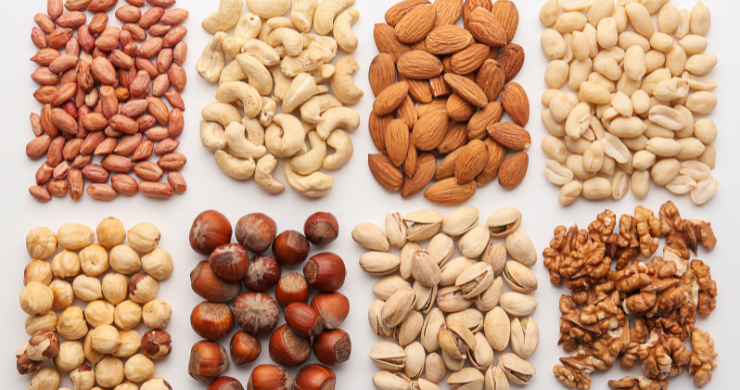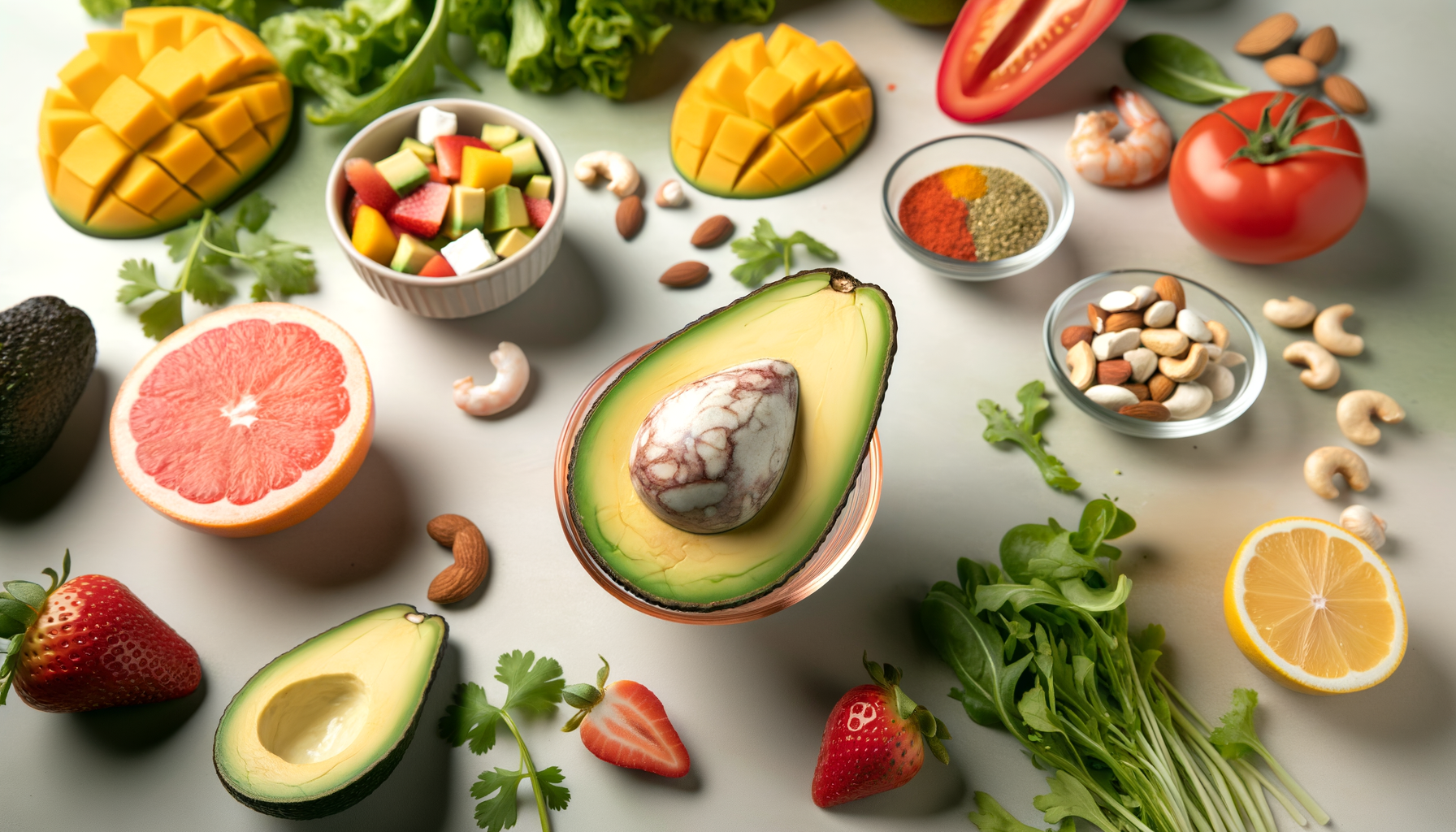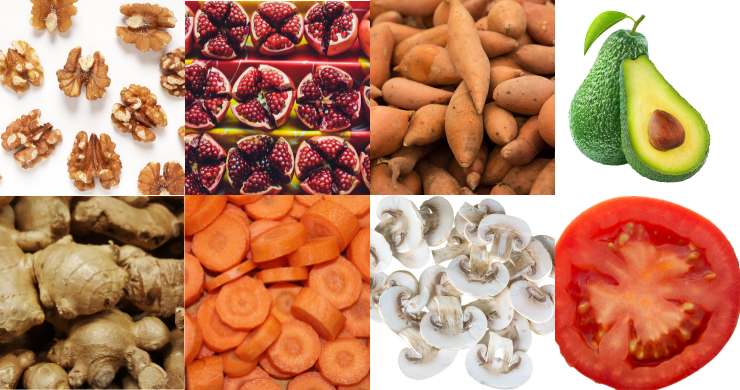Have you ever wondered why certain foods look like the body parts they benefit? This intriguing concept is known as the “Doctrine of Signatures,” an ancient belief that has been captivating minds for centuries.
Originating from Asian natural history, this doctrine suggests that the physical characteristics of natural objects, particularly plants and foods, are indicators of their healing properties.
Imagine discovering that the humble walnut, with its brain-like shape, is actually a powerhouse for cognitive health. Or that the vibrant red tomato, resembling the heart, is a champion for cardiovascular wellness.
The Doctrine of Signatures offers a fascinating intersection of nature’s wisdom and modern science. In ancient times, healers and herbalists relied on this doctrine to guide their practices, using visual clues to uncover the medicinal potential of plants.
Today, this age-old wisdom is finding new relevance in the field of epigenetics and lifestyle medicine. Epigenetics, the science of how our lifestyle choices affect our genes, reveals that the foods we eat can influence our health in profound ways. By understanding the connections highlighted by the Doctrine of Signatures, we can make informed choices that support our overall well-being.
In this blog, we delve into this remarkable world, exploring how various foods not only resemble but also support specific body parts. Join us on this journey as we uncover the historical roots of this doctrine, backed by modern scientific insights, to learn how to harness this knowledge and enhance your health and vitality.
Discover the synergy between ancient wisdom and contemporary science and see how the food on your plate becomes a powerful ally in your journey towards optimal health.
Now, let’s dive deeper into the captivating connections between the foods we eat and the body parts they benefit. Below, we explore 16 popular foods that conform to the Doctrine of Signatures, each with its unique story of how its shape and nutrients support specific aspects of our health.
From the heart-healthy tomatoes to the brain-boosting walnuts, you’ll be amazed at how nature’s design aligns with modern nutritional science. Let’s uncover the hidden wisdom in these everyday foods and see how they can enhance your health and well-being.
-
Tomatoes
- Nutrient: Lycopene
- Body Part: Heart
- Explanation: Tomatoes, with their red color and chambered structure, bear a striking resemblance to the human heart. They are rich in lycopene, a powerful antioxidant that has been shown to reduce the risk of heart disease by lowering LDL cholesterol levels and protecting the heart from oxidative damage.
-
Walnuts
- Nutrient: Omega-3 fatty acids
- Body Part: Brain
- Explanation: The wrinkled appearance of walnuts closely resembles the human brain. Walnuts are packed with omega-3 fatty acids, which are essential for brain health. These healthy fats help improve cognitive function, reduce inflammation, and protect against neurodegenerative diseases.

-
Carrots
- Nutrient: Beta-carotene
- Body Part: Eyes
- Explanation: Slicing a carrot reveals a pattern that looks like the eye’s iris. Carrots are rich in beta-carotene, which the body converts into vitamin A. This vitamin is crucial for maintaining good vision, preventing night blindness, and supporting overall eye health.
-
Celery
- Nutrient: Silicon
- Body Part: Bones
- Explanation: The long, fibrous stalks of celery resemble bones. Celery is a good source of silicon, which is important for bone health and strength. It helps in the regeneration of bone tissue and supports overall skeletal structure.
-
Avocados
- Nutrient: Folate
- Body Part: Uterus
- Explanation: The shape of an avocado is reminiscent of a womb. Avocados are high in folate, a vital nutrient for reproductive health. Folate supports healthy fetal development, reduces the risk of birth defects, and promotes a healthy pregnancy.

-
Ginger
- Nutrient: Gingerol
- Body Part: Stomach
- Explanation: Ginger root looks like the stomach and is well-known for its digestive benefits. Gingerol, the active compound in ginger, helps alleviate nausea, reduce inflammation, and improve digestion. It is often used to treat various gastrointestinal issues, such as indigestion and motion sickness.
-
Sweet Potatoes
- Nutrient: Beta-carotene
- Body Part: Pancreas
- Explanation: The shape of sweet potatoes resembles the pancreas. They are rich in beta-carotene, which is crucial for regulating blood sugar levels and improving insulin sensitivity. Sweet potatoes help support pancreatic function and can aid in managing diabetes.
-
Pomegranate
- Nutrient: Polyphenols
- Body Part: Ovaries
- Explanation: The seeds of a pomegranate resemble the ovaries, and this fruit is packed with polyphenols, which have antioxidant properties. Some studies suggest that pomegranates may help manage symptoms of menopause by balancing hormone levels and reducing oxidative stress. In animal studies, pomegranate extract has shown potential benefits in alleviating menopausal symptoms.
-
Grapes
- Nutrient: Resveratrol
- Body Part: Lungs
- Explanation: Clusters of grapes resemble the alveoli in the lungs. Grapes contain resveratrol, a potent antioxidant that supports lung health. Resveratrol helps protect the lungs from damage caused by pollution and smoking, reduces inflammation, and may improve respiratory function.
-
Figs
- Nutrient: Fiber
- Body Part: Male Reproductive Organs
- Explanation: Figs resemble the shape of testicles. They are high in fiber, which is essential for maintaining good digestive health. Additionally, figs contain important minerals like zinc and magnesium that support male reproductive health and hormone balance.
-
Kidney Beans
- Nutrient: Magnesium and Potassium
- Body Part: Kidneys
- Explanation: Kidney beans are shaped like kidneys and are rich in magnesium and potassium. These nutrients are crucial for maintaining healthy kidney function. They help regulate blood pressure, support the filtration of waste products, and maintain overall kidney health.
-
Mushrooms
- Nutrient: Vitamin D
- Body Part: Ears
- Explanation: Sliced mushrooms resemble the shape of the ear. Mushrooms are a natural source of vitamin D, which is vital for bone health and hearing. Vitamin D helps in the absorption of calcium, supporting the bones in and around the ear, which are essential for proper hearing function.

-
Oranges
- Nutrient: Vitamin C
- Body Part: Breasts
- Explanation: Oranges resemble the shape and structure of mammary glands. They are packed with vitamin C, an antioxidant that supports immune health and protects against cellular damage. Vitamin C also plays a role in collagen production, which is important for skin elasticity and breast health.
-
Onions
- Nutrient: Flavonoids
- Body Part: Cells
- Explanation: Onions have a layered structure that can be compared to layers of cells. They contain flavonoids, which are antioxidants that help protect body cells from damage and inflammation. Onions are also known for their antibacterial properties, which support overall cellular health and immune function.
-
Bananas
- Nutrient: Potassium
- Body Part: Smile
- Explanation: Bananas resemble a smiling mouth. They are rich in potassium, which is essential for maintaining good heart health and muscle function. Potassium also helps regulate mood and energy levels, contributing to a happy, healthy smile.
-
Olives
- Nutrient: Healthy Fats
- Body Part: Ovaries
- Explanation: Olives are similar in shape to the ovaries. They contain healthy fats, particularly monounsaturated fats, which support reproductive health. These fats help balance hormones and reduce inflammation, promoting overall ovarian health and function.
To your Health



